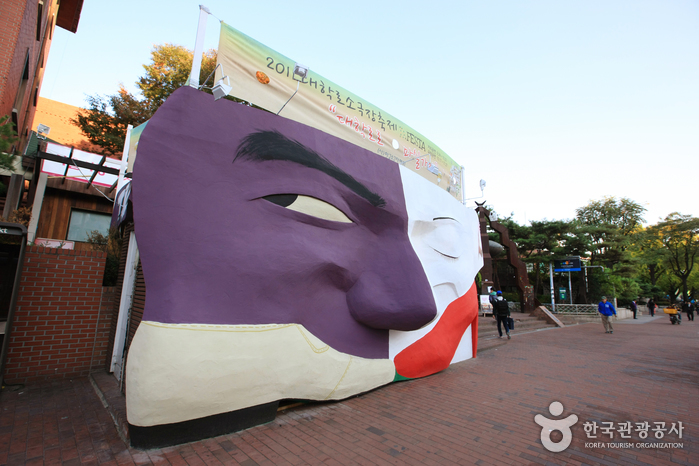Olive Young - Daehakro Jungang Branch [Tax Refund Shop] (올리브영 대학로중앙점)
2.1Km 2024-06-27
1F, 144, Daehak-ro, Jongno-gu, Seoul
-
Olive Young - Hyehwa Station Branch [Tax Refund Shop] (올리브영 혜화역점)
2.1Km 2024-06-27
1F, 122, Daehak-ro, Jongno-gu, Seoul
-
Daehangno (University Street) (대학로)
2.1Km 2021-03-25
104, Daehak-ro, Jongno-gu, Seoul
+82-2-2148-1114
Daehangno is an artistic neighborhood that stretches 1.1 kilometers from Jongno 5-ga Intersection to Hyehwa-dong Rotary. The area is filled with culture and performing arts facilities, with the center of all this being Marronnier Park. Visitors can find performances taking play every day at the many theaters large and small, as well as restaurants serving a range of cuisines. The area is especially active on weekends and during the street festival period.
Charles & Keith - NOON SQUARE Branch [Tax Refund Shop] (찰스앤키스 눈스퀘어)
2.1Km 2024-04-18
2F, 14, Myeongdong-gil, Jung-gu, Seoul
-


![Charles & Keith - NOON SQUARE Branch [Tax Refund Shop] (찰스앤키스 눈스퀘어)](http://tong.visitkorea.or.kr/cms/resource/15/2888615_image2_1.jpg)
 English
English
 한국어
한국어 日本語
日本語 中文(简体)
中文(简体) Deutsch
Deutsch Français
Français Español
Español Русский
Русский